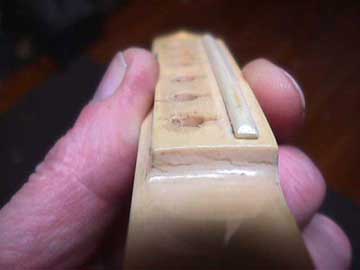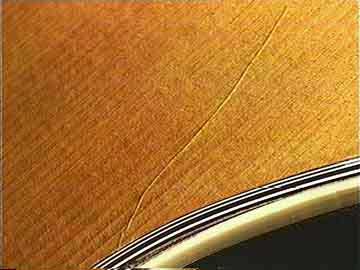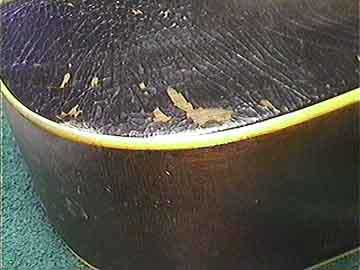Check
© Frank Ford, 11/17/98 Photos by FF
A "check" is a crack that occurs in wood as it loses moisture. The outer sections of the log dry first and the wood shrinks along the annular rings. The resulting tension is often resolved by the wood cracking perpendicular to the growth rings:

This particular kind of crack is called a "check" in the lumber trade.
Luthiers stretch the definition to mean any crack in the wood of an instrument that was not caused by mechanical injury.
You'll hear us talk about checks in other materials, too.
Ivory checks in exactly the same manner as wood. Here's a shot of a tusk, showing the checks from the outside:

If I look too closely in the mirror, my teeth are beginning to look a little too much like this tusk!
A Martin ivory guitar bridge from the 1840s shows some of the same checking:

Lacquer checks when it is too thick, or when it gets too cold. This gracefully arching lacquer crack is definitely a check in the finish, not a crack in the wood:

A crack in the wood will follow along the grain lines.
This instrument had a lot of UV exposure in the sunlight, the lacquer was applied too thick, and it probably saw its share of cold weather, too:

In fact the lacquer checks are so bad that pieces of the finish are simply flaking off.
As general rule, checks, whether in the finish or in structural parts, have little effect on the longevity of an instrument. They sure do mess up the cosmetics, though!
Back to Glossary
Back to Index Page